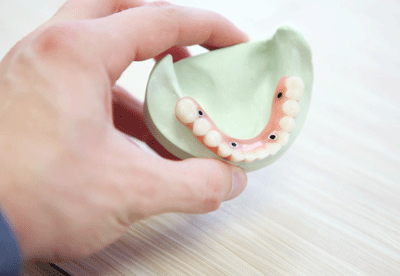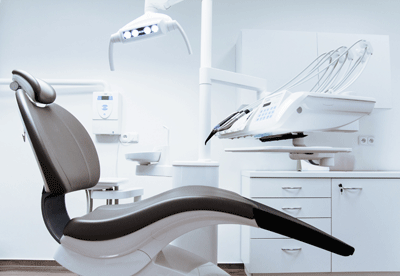How Are Invisalign Aligners Made?
If you’re looking at Invisalign as an option for straightening your teeth, you may be wondering just what exactly it is you’d be wearing in your mouth for months to come.
Invisalign aligners are made individually for each patient based on digital scans taken from their own teeth and bite. The teeth-straightening system works by gradually moving from one set of aligners to another over the course of the treatment, and reshaping your smile along with them. In the same way that traditional metal braces are tightened or adjusted to guide teeth into a new shape, Invisalign aligners will put gradual pressure on your teeth to move them into their new places.
Sometimes, your dentist may apply small tooth-colored protrusions to your teeth before you begin using Invisalign aligners. These are called SmartForce attachments, and allow your dentist to straighten teeth that are difficult to move or need multiple directions of force to be moved. They attach to the aligners and allow them to exert force more precisely on teeth that might present a more complex problem. The attachments allow Invisalign aligners to do more and help address issues that otherwise might call for metal traditional braces.
What They’re Made Of
The clear, removable aligners are made from a patented material from Invisalign called SmartTrack. It’s called this because it’s made with small blue indicators that can tell you or your parents whether you’ve been wearing the aligners long enough each day to accomplish your goals. (Invisalign patients usually need to wear the aligners for at least 20 to 22 hours a day to stay on track with their progress.)
SmartTrack is an extremely durable, BPA-free hard plastic material that is clear, and fits closely to your teeth. These qualities make the aligners near-invisible, which looks more pleasing than metal braces typically do. The material is chosen for comfort while wearing, and to fit your teeth tightly. It is tough, but light and flexible, and capable of gently moving your teeth during treatment.
How Aligners Are Made
The process starts at your MPDG dentist’s office, as he or she will create a custom treatment plan for you. A detailed digital scan is taken of your teeth with a scanner designed specifically for that purpose. That’s used to create a 3D image of your bite and smile. The images allow your dentist to map out a thorough, exact treatment plan that will gradually move your teeth into the desired new shape. At this point, you’ll also know about how long Invisalign treatment will take for your needs — it can be different for each person.
Your aligners are made by Invisalign at a lab, using an advanced 3D printing process. (An interesting fact for you — Invisalign is actually the world’s largest user of this kind of cutting-edge 3D printing.) When they’re ready, they’ll be sent to your dentist, who will then check to make sure they fit correctly. The aligners are trimmed to fit your gumline comfortably, based on the scans of your teeth taken earlier.
Over the course of your treatment plan, you’ll switch through several sets of aligners. Each set helps you progress toward your end goal of having straight teeth. You can usually expect to move on to the next set of aligners every few weeks, but the timing is an individual process that depends on the condition of your teeth and what problems your dentist is treating with Invisalign.
Our Invisalign Experience
Monterey Peninsula Dental Group is proud to be an Invisalign Preferred Provider. This means we’ve gone through certification with Invisalign to prove we are well-versed in using the Invisalign system, and have continually and successfully treated many cases with it. In fact, we are a top Invisalign provider for the Monterey Peninsula. It also means our staff is familiar with helping our patients through the billing and insurance process with Invisalign and can answer all your Invisalign questions. Get in touch with us to find out more about whether Invisalign might be right for your dental goals.
See what our happy patients are saying:
Robert S.
I continue to receive excellent dental care and support from the dental group I have used for the past 36 years. I have had 2 dentists retire, and I now live an hour drive away, but I keep coming back for the superb dental care and advice.
Robert W.
I have tried several dentists over years , but, none would compare to team of Ryan Lehr's (D.D.S) office. I would highly recommend you trying them out, you will come away from your visit with a feeling of having found the "Right Team"!
Jennifer S.
I so appreciate the service I receive when I go to Dr. Lehr's Office for my checkups. I think the practice as a whole is much improved by technology and process improvements.






